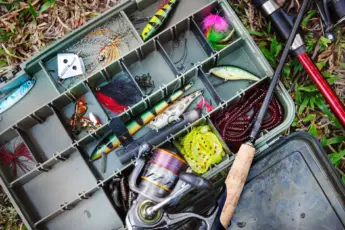One of the most vicious looking fish swimming in our oceans is the barracuda. Barracudas are sleek muscular, and have highly visible sharp teeth protruding from the jaws. I have caught many barracuda and, therefore, have had an up close and personal experience handling the toothy critter. The barracuda is notorious for its big appetite as it consumes a wide range of marine life. In fact, I have caught barracuda on a multitude of baits. So, what do barracudas eat?
The Diet Of A Barracuda
Without question, the diet of a barracuda is highly dependent on the size of the fish. I have caught barracuda measuring from less than a foot to over four feet in length.
Let’s just say that the barracuda eats nearly everything and anything living in the ocean.
Crustaceans
It should be noted that the barracuda lives in both inshore and offshore waters. However, the inshore great barracuda tends to be smaller in comparison to those in the open seas.
While I have never caught a barracuda on a crustacean offshore, I have caught numerous inshore.
The barracuda will readily strike live shrimp when presented beneath a float or on the bottom. It should be noted that I was not intentionally trying to catch barracuda. Instead, my goal was to catch snapper, snook, and tarpon.
Without question, if you’re targeting barracuda inshore, shrimp is an excellent option.
Fish
Unquestionably, the barracuda primarily dines on fish. The number of fish varieties of fish species is so vast I will not be able to cover them all. Instead, I’ll focus on what anglers primarily use as bait when fishing reefs or trolling.
As an avid angler, I have hooked and landed barracuda while bottom fishing reefs in addition to trolling blue water.
While trolling blue water, the barracuda has no issue chasing down a lure rigged with a dead ballyhoo. For this reason, the ballyhoo is either dead or alive and is a great choice when it comes to barracuda.
The vast majority of anglers catch barracuda while fishing over reefs and wrecks. No question about it; live bait is your best option. The movement of the rigged bait fish attracts the attention of a barracuda, leading to a strike.
In regards to the best live baits to choose from, I recommend mullet, grunts, small jacks, goggleyes, and more.
However, similar to inshore, I do not target barracuda offshore. Instead, the barracuda is often a bycatch.
Unfortunately, the majority of my barracuda catches sacrifice a fish that I was targeting. Similar to sharks, the barracuda will chase hooked fish and eat them whole.
On many occurrences, I have caught barracuda while reeling in yellowtail snapper, grouper, and even tuna.
How To Properly Handle A Barracuda
Unquestionably, you will need to handle a barracuda cautiously when removing the hook. The teeth of a cuda will inflict painful wounds if you get your hands and fingers in its mouth.
For this reason, I recommend bringing along a pair of fishing pliers. The pliers will allow you to keep your hands well away from the mouth while pulling the hook free.
In addition to a mouth full of fangs, barracuda are incredibly slimy and, therefore, slippery. I suggest holding the fish on the deck of a boat or the ground compared to holding it vertically






